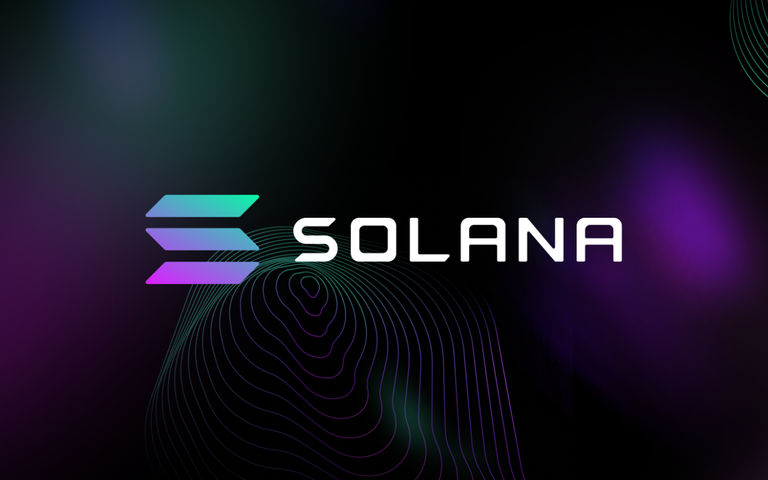In the ever-evolving world of blockchain technology, the competition between Solana and Ethereum has become a focal point for investors and developers alike. However, beneath the surface of technical comparisons lies a more complex narrative – one that involves investor psychology, market positioning, and the defense of existing investments.

The EVM Bias: A Hidden Agenda?
One of the most overlooked aspects of the Solana-Ethereum debate is the inherent bias many investors and industry players have towards Ethereum and other EVM-compatible chains. This bias isn't just about technological preference; it's often rooted in financial self-interest.
Why the Bias Exists:
Existing Investments: Many institutional and retail investors have significant holdings in Ethereum and EVM-compatible projects. Acknowledging Solana's strengths could potentially threaten the value of these investments.
Ecosystem Lock-in: Developers and projects deeply entrenched in the Ethereum ecosystem may be reluctant to consider alternatives, as it could mean starting from scratch or losing their competitive advantage.
Cognitive Dissonance: There's a psychological tendency to defend one's investment decisions, even in the face of contradictory evidence.
Manufactured Criticisms?
While Solana has faced legitimate challenges, such as network outages and centralization concerns, it's important to scrutinize the motivations behind some of the criticisms leveled against it.
Common Criticisms and Their Potential Motivations:
"Solana's Data is Hard to Query": This argument persists despite the existence of tools like Dune Analytics and Artemis. It may be used to justify avoiding deeper analysis of Solana's growing ecosystem.
"Lack of Decentralization": While a valid concern, this criticism often overlooks Solana's rapid progress in increasing validator count and network resilience.
"Frequent Network Outages": Critics tend to focus on past issues without acknowledging the significant improvements made to network stability. Many issues on EVM and non-Solana chains haven't been highlighted, as the EVM cartel has intentionally tried to ignore them, and users haven't paid much attention to problems occurring on low-usage chains.
The Data Revolution: CryptoHouse and Beyond
The introduction of CryptoHouse, a free blockchain analytics service for Solana, directly challenges the narrative of data inaccessibility. This development, along with other tools, is making it increasingly difficult for critics to use data opacity as a reason to dismiss Solana.
Solana's Growing Ecosystem: Facts vs. Perception
Despite the criticisms, Solana's ecosystem has shown remarkable growth:
- Nearly $90 million raised for Solana projects in Q1 2024
- The launch of Colosseum, a Y Combinator-like accelerator
- Solana becoming one of largest DeFi ecosystem with around $4.9 billion TVL
These developments challenge the notion that Solana is falling behind EVM chains in terms of adoption and innovation.
The Investor's Dilemma
For investors, the Solana vs. Ethereum debate presents a complex decision:
- Diversification vs. Concentration: Sticking solely with EVM investments may limit exposure to potentially groundbreaking technologies.
- Short-term Stability vs. Long-term Potential: While Ethereum offers stability, Solana's growth trajectory suggests significant long-term potential.
- Objective Analysis vs. Confirmation Bias: Investors must strive to evaluate projects based on merit rather than preexisting biases.
Beyond the Bias
As the blockchain space evolves, it's crucial for investors and analysts to look beyond their existing biases and vested interests. Solana's technical merits, growing ecosystem, and improving data accessibility make it a serious contender in the blockchain space.
The tendency to criticize or downplay Solana's achievements to justify existing EVM investments is a short-sighted strategy that may lead to missed opportunities. As responsible investors, we must strive for objective analysis, acknowledging both the strengths and weaknesses of all platforms.
The future of blockchain technology is likely to be multi-chain, with different platforms serving various needs. By moving past the "Ethereum killer" narrative and recognizing the unique value propositions of different blockchains, investors can position themselves to benefit from the full spectrum of innovation in this rapidly evolving space.
In the end, the true winners in the blockchain revolution will be those who can adapt, diversify, and recognize potential beyond their current investment theses. As Solana continues to address its challenges and grow its ecosystem, it may well prove to be a pivotal player in shaping the future of decentralized technologies – regardless of the narratives spun by those with vested interests elsewhere.
Harry Potter Library (HPL) Community
Please join the HPL community. You will get upvotes for your posts. Simply join and post there using the tags "hpl" or "harrypotterlibrary" in your post.
- Community Address: https://steemit.com/trending/hive-140602
- About HPL Community:
EN: Harry Potter Library - HPL
KR: [해리포터의 도서관 (Harry Potter Library, HPL)](https://steemit.com/hive-140602/@harryji/ab7uv-harry-potter-library-hpl